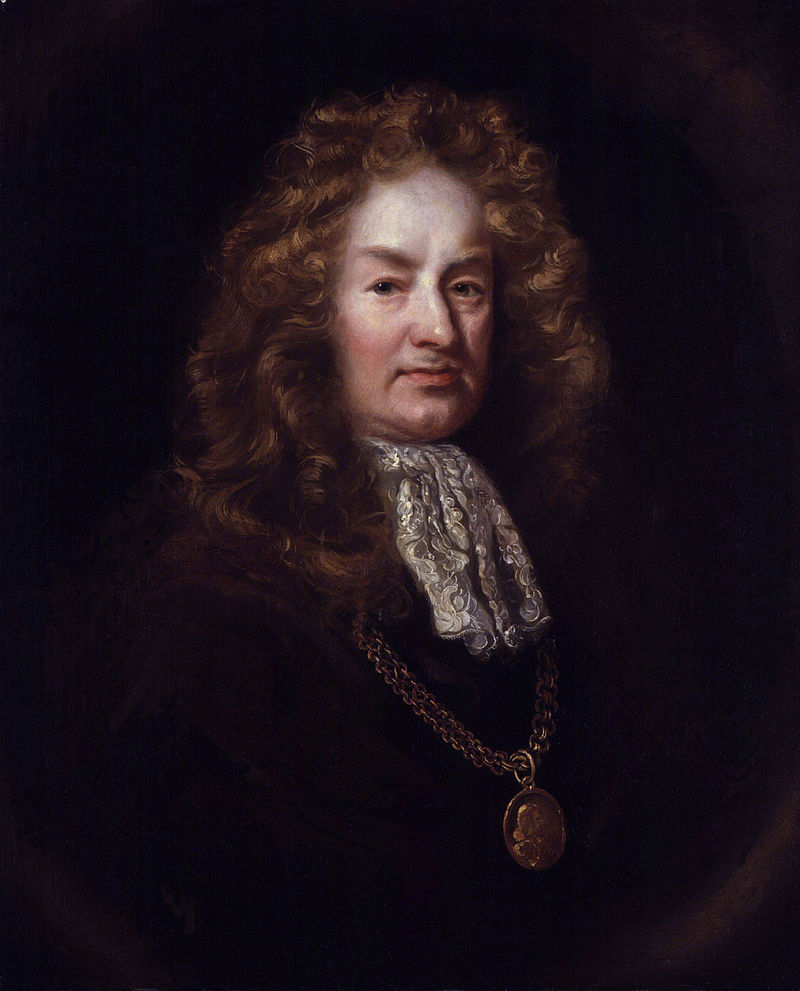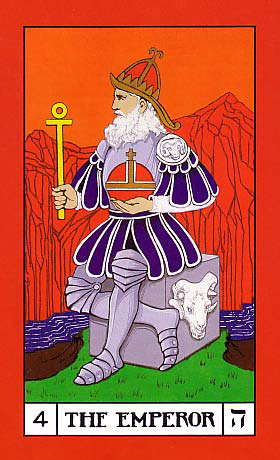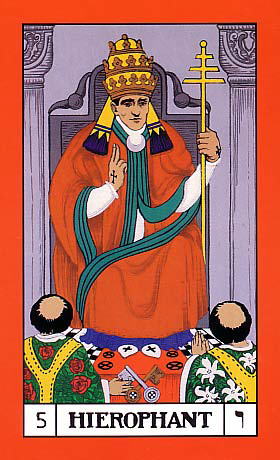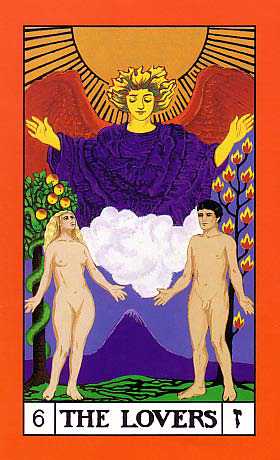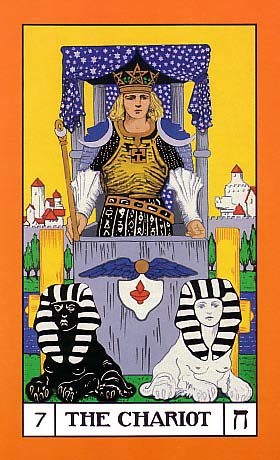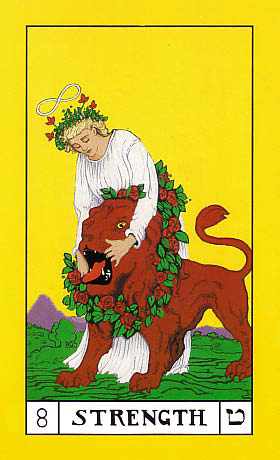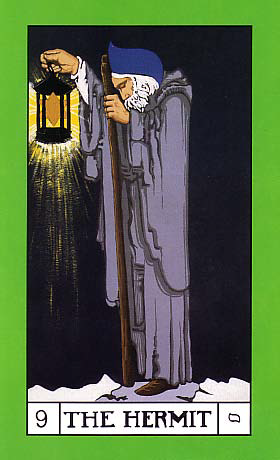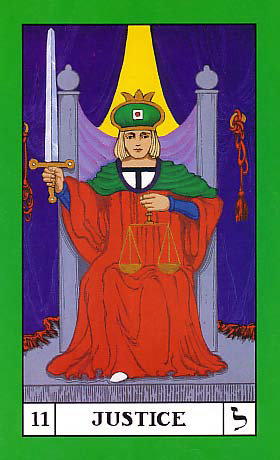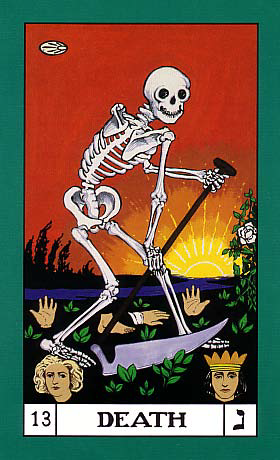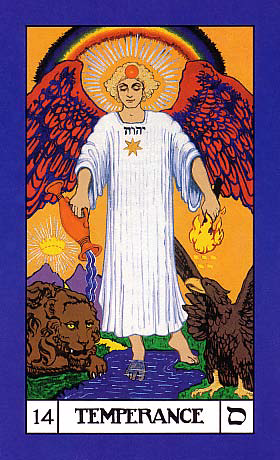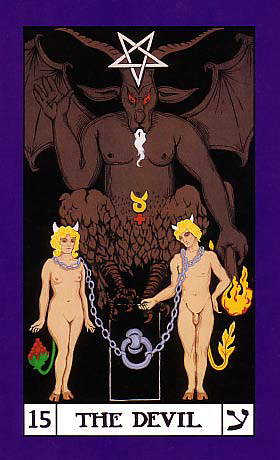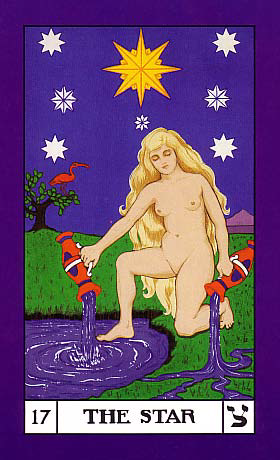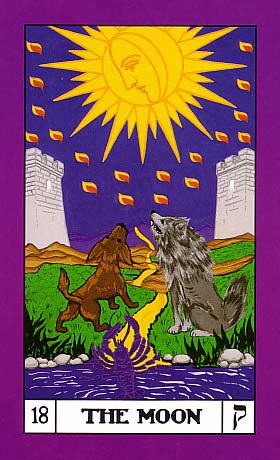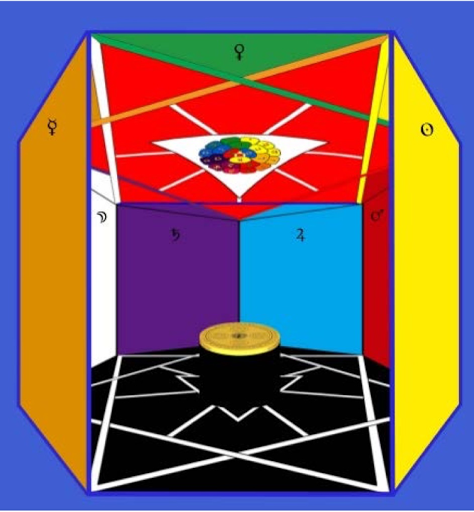THE STORY OF THE RED AND THE WHITE ROSES
Black Dragon was of the lower Earth. Among the harsh rocks which were his dwelling he had gathered great treasures of precious metals and of gems: jasper and turquoise. emerald and chalcedony, amethyst, sapphire, opal, citrine and many others. There were no pearls, however. Those gleaming sea-jewels are the very token and symbol of water, and water, except as it might be found mixed into mire, was a thing which Black Dragon feared and hated greatly. The land in which he dwelt was hot, stony and barren, so that any water which was not hidden was quickly scorched away by the sun; usually, therefore, Black Dragon could live as if water did not exist. He delighted in adding to his hoard of gems and loved to range them in heaps upon the sill of his lair so that the fierce light danced and leaped among their myriad colors, but he had another ambition, too, an ambition which increased with his store.
What he truly wanted was to deck himself in those rich jewels and to be seen by the people of the surrounding country, so that they should be amazed and should revere him as their god or at least as their king. He knew himself to be hideous to look upon, however, and perceived that, decked with jewels, he would provoke only disgust or derision, not admiration or worship. He therefore formed another plan and resolved to bide his time. He lay in wait, and in due course took captive the maiden known as Soul of the Earth, whom he carried off to the wilderness where he dwelt. Trapped and terrified, she speedily learned that help was not at hand and that no course was now open to her, save submission.
Then Black Dragon caused her to be clothed in gorgeous raiment. A jeweled crown was set upon her head, jewels were placed upon her brow and her neck and her bosom, her arms, hands, waist, ankles and feet. She was enthroned upon a throne of gold on a high dais, and heralds were sent forth to sound their trumpets and to cry aloud: COME, BEHOLD AND WORSHIP THE QUEEN OF THE WORLD! Travelers from all regions came and marveled at the great beauty of Soul of the Earth, and at the richness of her attire, and at the high golden throne whereon she was seated. Then when they were assembled, another herald cried: BEHOLD THE BEAUTY AND RICHES OF THE QUEEN OF THE WORLD, AND BOW DOWN BEFORE BLACK DRAGON, WHOM THE QUEEN OF THE WORLD OWNS TO BE HER LORD! Many there were who worshiped, but many also there were who bowed down only in fear of Black Dragon; and a murmur began to go forth against Soul of the Earth, so that she was called harlot and traitress for the part she played.
Now it happened that the King’s Son was journeying through that land. He was a valiant young man, whose badge and ensign was a red rose; so he himself had come to be known among the people b= the name of Red Rose. As he rode, he heard the trumpets of the heralds and the words which followed: “Come, behold and worship the Queen of the World!”—”I shall not worship, but I will behold,” declared Red Rose, and he joined in the troop which was going to gaze at Soul of the Earth.
The riches with which she was surrounded did not dazzle him, for he had seen such things before, but her beauty of face and form moved him to wonder, and to more than wonder. He beheld, too, the hideous bulk of Black Dragon upon the dais, and he became the more perplexed .
Then, looking more attentively at Soul of the Earth, he perceived that the golden chains upon her wrists and ankles were not harmless adornments, but were fetters indeed.
Likewise the thin veil which covered the lower part of her face was not intended merely to give mystery to the luster of her eyes, although with deep mystery they shone, but it served to disguise the seal which had been set upon her lips.
And then he saw that there were no pearls among her jewels. As he moved away through the crowd, he asked a bystander, “Why does your Queen wear no pearls?” “Black Dragon forbids even the name of the oceanstones,” muttered the inhabitant, and Red Rose understood what was to be done. He went to the jewelers of the place and sought to buy a pearl, but they had none to offer him. “I am the King’s Son, and I am called Red Rose,” he said: “_ ask not the price, but I would buy one single pearl.” “Sir, you need not to tell us your name, since its high fame is well known to us. We are yours to command, but there is not one pearl in all these lands, for fear of Black Dragon.” Then Red Rose left their company and went out into the wilderness, and under the heavens he cried aloud, “By the Splendor of the Sun I swear, I would give all I possess for one pearl, that with it _ might win Soul of the Earth from bondage!” And 10, a Shining One stood in the sunlight with a glorious smile, replying to Red Rose, “Will you give all that you have? The time is not yet: but come, I will show you the pearl.” He led Red Rose to a fair garden, where no water was to be seen, but it was led cunningly through channels in the rocks underground so that the roots of the plants were fed thereby; and in the midst of the garden was a bush upon which grew one white rose. Red Rose put out his hand to the blossom, and with a further word of encouragement the Shining One left him. In the center of the flower, sheltered by the petals, gleamed a single drop of dew.
The Prince gathered the rose and carried t carefully back to where Soul of the Earth sat enthroned. “I bring a gift to your Queen, richer than anything she yet has,” he told the crowd: and as they made way for him they murmured, “He brings a rose of alabaster, he brings a rose of ivory, he brings a rose of whitest jade!” So he approached the dais; and when he had come near, he threw the rose so that the drop of dew fell upon Soul of the Earth. Instantly the seal was gone from her lips, and the fetters shriveled like burnt grass away from her wrists and ankles. “ give you freedom, and a new name, O White Rose!” cried Red Rose: “now begone, begone to safety!” So she flung the gems and adornments from her, and fled. When Black Dragon saw what had happened, and knew himself powerless to prevent it, he called out to her, “Soul of the Earth, do not go from me! Is it not enough that I have given you jewels and gold, a crown and a seat of honor?” “It is not enough,” she replied, “for because of these things I am scorned and miscalled before the world.” And ever since that time, let no man intending evil put his trust in any woman whatsoever, for in an instant she mXy clothe herself in the strong innocence of Soul of the Earth, and spurn him.
THE STORY OF THE RED AND THE WHITE ROSES
Black Dragon was of the lower Earth. Among the harsh rocks which were his dwelling he had gathered great treasures of precious metals and of gems: jasper and turquoise. emerald and chalcedony, amethyst, sapphire, opal, citrine and many others. There were no pearls, however. Those gleaming sea-jewels are the very token and symbol of water, and water, except as it might be found mixed into mire, was a thing which Black Dragon feared and hated greatly. The land in which he dwelt was hot, stony and barren, so that any water which was not hidden was quickly scorched away by the sun; usually, therefore, Black Dragon could live as if water did not exist. He delighted in adding to his hoard of gems and loved to range them in heaps upon the sill of his lair so that the fierce light danced and leaped among their myriad colors, but he had another ambition, too, an ambition which increased with his store.
What he truly wanted was to deck himself in those rich jewels and to be seen by the people of the surrounding country, so that they should be amazed and should revere him as their god or at least as their king. He knew himself to be hideous to look upon, however, and perceived that, decked with jewels, he would provoke only disgust or derision, not admiration or worship. He therefore formed another plan and resolved to bide his time. He lay in wait, and in due course took captive the maiden known as Soul of the Earth, whom he carried off to the wilderness where he dwelt. Trapped and terrified, she speedily learned that help was not at hand and that no course was now open to her, save submission.
Then Black Dragon caused her to be clothed in gorgeous raiment. A jeweled crown was set upon her head, jewels were placed upon her brow and her neck and her bosom, her arms, hands, waist, ankles and feet. She was enthroned upon a throne of gold on a high dais, and heralds were sent forth to sound their trumpets and to cry aloud: COME, BEHOLD AND WORSHIP THE QUEEN OF THE WORLD! Travelers from all regions came and marveled at the great beauty of Soul of the Earth, and at the richness of her attire, and at the high golden throne whereon she was seated. Then when they were assembled, another herald cried: BEHOLD THE BEAUTY AND RICHES OF THE QUEEN OF THE WORLD, AND BOW DOWN BEFORE BLACK DRAGON, WHOM THE QUEEN OF THE WORLD OWNS TO BE HER LORD! Many there were who worshiped, but many also there were who bowed down only in fear of Black Dragon; and a murmur began to go forth against Soul of the Earth, so that she was called harlot and traitress for the part she played.
Now it happened that the King’s Son was journeying through that land. He was a valiant young man, whose badge and ensign was a red rose; so he himself had come to be known among the people b= the name of Red Rose. As he rode, he heard the trumpets of the heralds and the words which followed: “Come, behold and worship the Queen of the World!”—”I shall not worship, but I will behold,” declared Red Rose, and he joined in the troop which was going to gaze at Soul of the Earth.
The riches with which she was surrounded did not dazzle him, for he had seen such things before, but her beauty of face and form moved him to wonder, and to more than wonder. He beheld, too, the hideous bulk of Black Dragon upon the dais, and he became the more perplexed.
Then, looking more attentively at Soul of the Earth, he perceived that the golden chains upon her wrists and ankles were not harmless adornments, but were fetters indeed.
Likewise the thin veil which covered the lower part of her face was not intended merely to give mystery to the luster of her eyes, although with deep mystery they shone, but it served to disguise the seal which had been set upon her lips.
And then he saw that there were no pearls among her jewels. As he moved away through the crowd, he asked a bystander, “Why does your Queen wear no pearls?” “Black Dragon forbids even the name of the oceanstones,” muttered the inhabitant, and Red Rose understood what was to be done. He went to the jewelers of the place and sought to buy a pearl, but they had none to offer him. “I am the King’s Son, and I am called Red Rose,” he said: “_ ask not the price, but I would buy one single pearl.” “Sir, you need not to tell us your name, since its high fame is well known to us. We are yours to command, but there is not one pearl in all these lands, for fear of Black Dragon.” Then Red Rose left their company and went out into the wilderness, and under the heavens he cried aloud, “By the Splendor of the Sun I swear, I would give all I possess for one pearl, that with it _ might win Soul of the Earth from bondage!” And 10, a Shining One stood in the sunlight with a glorious smile, replying to Red Rose, “Will you give all that you have? The time is not yet: but come, I will show you the pearl.” He led Red Rose to a fair garden, where no water was to be seen, but it was led cunningly through channels in the rocks underground so that the roots of the plants were fed thereby; and in the midst of the garden was a bush upon which grew one white rose. Red Rose put out his hand to the blossom, and with a further word of encouragement the Shining One left him. In the center of the flower, sheltered by the petals, gleamed a single drop of dew.
The Prince gathered the rose and carried _t carefully back to where Soul of the Earth sat enthroned. “I bring a gift to your Queen, richer than anything she yet has,” he told the crowd: and as they made way for him they murmured, “He brings a rose of alabaster, he brings a rose of ivory, he brings a rose of whitest jade!” So he approached the dais; and when he had come near, he threw the rose so that the drop of dew fell upon Soul of the Earth. Instantly the seal was gone from her lips, and the fetters shriveled like burnt grass away from her wrists and ankles. “_ give you freedom, and a new name, O White Rose!” cried Red Rose: “now begone, begone to safety!” So she flung the gems and adornments from her, and fled. When Black Dragon saw what had happened, and knew himself powerless to prevent it, he called out to her, “Soul of the Earth, do not go from me! Is it not enough that I have given you jewels and gold, a crown and a seat of honor?” “It is not enough,” she replied, “for because of these things I am scorned and miscalled before the world.” And ever since that time, let no man intending evil put his trust in any woman whatsoever, for in an instant she mXy clothe herself in the strong innocence of Soul of the Earth, and spurn him.
But White Rose, as she was now named, when she had left Black Dragon, fled away with the swiftness of fleeing Atalanta. She sped through the air over the Mountains of the Moon, until she came to the ocean of silvery water. Into that ocean she plunged; she washed away the last stains of her sojourn with Black Dragon, and then she swam on through the sea until she came to the shore of a most green land. The people of that country were amazed as she came from the sea, for she shone like the stars, and the queen of that country welcomed her as a sister. That region abounded in every kind of herb, and there were gentle lone giving m*lk and curd; there was also music and rejoicing continually. There. secretly, White Rose abode for a while.
Black Dragon, when his captive fled, pursued her for a short distance, but being of the lower earth he could not follow when she sped through the air. He therefore returned full of fury to seek for Red Rose, but the King’s Son, having made sure that White Rose had escaped in truth, had withdrawn to his own place. And both Red Rose and Black Dragon, each in his own way, sent forth for tidings of White Rose, but none could tell what had become of her.
Then Black Dragon cared no longer for his treasures and his lair in the wilderness, but began to roam through the land, breaking and destroying, and saying again all the evil that had been said of White Rose in the time of her captivity.
At last, therefore, Red Rose saw that an end must be made to this, so he took a strong lance and rode forth to do battle to the death with Black Dragon.
When they met, Black Dragon roared and snorted and lowered his head to charge, but he was heavy and at first moved slowly. Red Rose had leveled his lance, and upon his swift horse dashed in as thinking to slX= his adversary with a single blow, but Black Dragon’s hide was tough as leather and hard as iron. The lance was stopped as if Red Rose had charged against a granite cliff, and he was flung from the saddle by the shock. He sprang to his feet and drew his sword, barely in time before Black Dragon was upon him.
Now followed a long, close and deadly contest between the two. Those who had gathered to watch perceived that Red Rose was by far the more nimble but, being unable to pierce Black Dragon’s hide, could do no more than defend himself. This he did bravely with sword and shield, but not always successfully, since Black Dragon could attack with his claws and with his terrible fangs at the same time. Thus Red Rose had several great wounds, so that the blood flowed. and the bystanders for pity called out to him to flee.
“NXb, now I have earned my ensign and my name,” he said, “now am I Red Rose in truth.” But just then the monster swerved in upon him again, and with great fangs ripped his thigh, and so departed, leaving Red Rose lying in his own blood upon the rocky ground.
Although nobody had news of White Rose, however, she had continual tidings of the land which she had left. She had heard of Red Rose’s setting forth against Black Dragon, and at once, full of fear for the outcome, with two ladies of the green land, she took ship across the ocean and arrived at the place of conflict with what speed she might. There she was told that Red Rose was slain, and Black Dragon was for the time being departed into the wilderness. You may think how she and her companions lamented over Red Rose, but she would not linger there to be retaken by Black Dragon; so they carried Red Rose gently on to the ship, uncertain as they were whether he was in fact quite dead, and thus White Rose brought him with her to the green country.
They bathed and tended him, and knew that they could do nU more, yet still White Rose would not give up hope; so they set up four posts, and a canopy over them, and in this shelter they covered him with sweet herbs and left him.
As he lay there, his spirit hovering uncertain whether to tarry or to depart, there came to him suddenly that Shining One who had shown him how to save White Rose.
“Remember now your oath,” said the Shining One, “when you sware by Sol’s Splendor to g\ve all you possessed if a certain thing were done, and that th*ng was done. Now therefore in the name of my master the All-victorious Sun, I am come to claim your pledge. You challenged Black Dragon to combat, and if you were your own man he has slain you, you must confess it. By your oath however, your limbs and your body, your flesh and your blood belong to the Sun, and I say Black Dragon shall not rob him of what is his. Up, then; be whole and stand!” With these words, the Shining One took Red Rose’s hand and drew him to his feet, and, marvel of marvels, he was all whole, and stood firmly.
When he had thanked the other for his healing, Red Rose asked, “What should I do?” “Go against Black Dragon again if that is your will, but know that cold steel shall never prevail against him. What has gone before has been all child’s play, and women’s work, for women’s work is done by water, all washing and cleansing and scouring as this has been. Now, that white work is done. The red work is commenced, which you began by shedding yUur blood, but this is man’s work, and only by fire can it be completed. You have pledged yourself to the Sun, and to the Sun entirely you now belong; by the fire of the Sun therefore shall come the victory.” Thus saying, the Shining One departed.
Red Rose remained alone, pondering these words until their meaning was all clear to him. Then, his meditations at an end, he went to the queen of the country, and to White Rose and the other ladies. and thanked them for their care of him. Also he had them make for him a little pennant, with the sign of the Sun upon it. This done, he made ready to do battle again with Black Dragon. White Rose would have set out with him, but he forbade her, remembering the words of the Shining One, and bade her remain in that land to await his return. All being in readiness, he crossed again to the region which Black Dragon had laid waste.
Now, the shield which Red Rose carried was of bright steel, polished so that it shone like glass. When he had come close to Black Dragon’s lair, therefore, he gathered some dead leaves and twigs in an open place which was hidden from the cavern. Then he set his shield in such a way that, as the sun rose hot and bright, the shield gathered the fierce rays and flung them again upon the leaves and twigs.
Presently a little smoke coiled up from the heap, then more smoke, and at last a pallid wisp of flame. Red Rose brought more wood, and carefully fed it to the fire. When the fire which he had thus drawn from the sun’s rays was built great and strong, he brought his lance that was of hard ash-wood and began to heat the lance-head in the fire. All being ready at last. he mounted his horse, beat loudly upon his shield, and called Black Dragon forth to battle. Black Dragon came out with a loud roar; Red Rose took the lance, which was now a shaft of the sun’s fire, and leveled it for the charge. This time, the conflict was indeed settled at one blow: the sun-fire lance pierced clean through Black Dragon’s hard, tough hide, so that with one last roar he rolled over dead. The people who had stood to watch, and more who had been in hiding, gave a great cheer, for they had lived in dread of Black Dragon. Then they banked up the sun-fire into a large mound of burning logs. and dragged the unwieldy body onto this pyre that it might be destroyed utterly. And now a marvel occurred, for the sunfire had so penetrated and transmuted that bulk, that at once, released from the shape of Black Dragon, the elements thereof returned to their place in nature; and, with a sweet fiery odor as of frankincense and cinnamon they vanished.
Now, matters stood that Red Rose had saved White Rose from Black Dragon, and White Rose had saved Red Rose, and there was great love between them. So he was resolved to marry her, and declared their betrothal, and there was much rejoicing. Yet not everyone was content.
Some there were who said that the marriage would not be fitting, since he was the King’s Son and she was but Soul of the Earth; and others recalled the evil things that had been spoken of her, and said Red Rose ought not to marry one who had been so accused, albeit falsely. There was much debate therefore, until all parties agreed to refer the question for decision to the King’s Mother.
The King’s Mother was a gray woman who dwelt apart and in silence, but high dignity was hers and great honor.
Her father had been a powerful king in the elder times; much of sorrow she had known, and much of wisdom. She listened to the history of White Rose, and looked upon her; then she drew the young betrothed bride to her and set her at her side upon the huge, dark throne. Then there was nothing more at all for anyone to say upon this matter, and the marriage of Red Rose and White Rose was solemnized forthwith.
Nevertheless, it is not chiefly because of them that this story is told, but because of their son. For they had a son, who so much resembled his father, and so much his mother, that none could tell which he was more like. So people came to call him the Androgyne, although his true name was Splendor Solis. You may sometimes see a symbolic picture of him, showing him half in the likeness of his father and half of his mother; and he has wings, because he and they are of the spiritual world; and he bears crowns of peaceful dominion, but also a mighty sword and upon it a crown which is the prize of victory. Beneath his feet lie the misshapen and chaotic clan of Black Dragon, whose lawless remnants it was his task to quell. And another of his names is Lapis Ph*losophorum, the Philosophers’ Stone; for know you that that Stone is not an inert thing, but living.
Yet some say that this picture does not represent a son of Red Rose, but Red Rose himself after the Shining One raised him from the bier; and they say White Rose was in truth, as Red Rose often called her, his other self. These are mysteries, yet they make no difference to our story or to its telling. With many variations it is told, and must be so, since it is the inner story of each one who wins through to Adepthood.
Let the new adept beware, however, when he is released from his tomb, how he acts towards those around him.
When the Philosophers’ Stone is “projected” upon any material, a ferment occurs (we are told), after which the new material must be submitted to the furnace and will emerge transmuted into gold, or into whatever may be the highest development of its own kind. This is truly a wonderful power, but not all are ready for the furnace.
Certa*nly this is infallibly true, and the alchemists deserve all honor for perceiving it—that which has been transformed will itself cause transformation. The man or woman who has passed through the philosophical alchemy and has emerged with integrated personality bears ambiguous gifts to the world of which he or she is no longer fully native: in one hand a crown of peace, in the other a sword.
When he had thanked the other for his healing, Red Rose asked, “What should I do?” “Go against Black Dragon again if that is your will, but know that cold steel shall never prevail against him. What has gone before has been all child’s play, and women’s work, for women’s work is done by water, all washing and cleansing and scouring as this has been. Now, that white work is done. The red work is commenced, which you began by shedding yUur blood, but this is man’s work, and only by fire can it be completed. You have pledged yourself to the Sun, and to the Sun entirely you now belong; by the fire of the Sun therefore shall come the victory.” Thus saying, the Shining One departed .
Red Rose remained alone, pondering these words until their meaning was all clear to him. Then, his meditations at an end, he went to the queen of the country, and to White Rose and the other ladies. and thanked them for their care of him. Also he had them make for him a little pennant, with the sign of the Sun upon it. This done, he made ready to do battle again with Black Dragon. White Rose would have set out with him, but he forbade her, remembering the words of the Shining One, and bade her remain in that land to await his return. All being in readiness, he crossed again to the region which Black Dragon had laid waste .
Now, the shield which Red Rose carried was of bright steel, polished so that it shone like glass. When he had come close to Black Dragon’s lair, therefore, he gathered some dead leaves and twigs in an open place which was hidden from the cavern. Then he set his shield in such a way that, as the sun rose hot and bright, the shield gathered the fierce rays and flung them again upon the leaves and twigs .
Presently a little smoke coiled up from the heap, then more smoke, and at last a pallid wisp of flame. Red Rose brought more wood, and carefully fed it to the fire. When the fire which he had thus drawn from the sun’s rays was built great and strong, he brought his lance that was of hard ash-wood and began to heat the lance-head in the fire. All being ready at last. he mounted his horse, beat loudly upon his shield, and called Black Dragon forth to battle. Black Dragon came out with a loud roar; Red Rose took the lance, which was now a shaft of the sun’s fire, and leveled it for the charge. This time, the conflict was indeed settled at one blow: the sun-fire lance pierced clean through Black Dragon’s hard, tough hide, so that with one last roar he rolled over dead. The people who had stood to watch, and more who had been in hiding, gave a great cheer, for they had lived in dread of Black Dragon. Then they banked up the sun-fire into a large mound of burning logs. and dragged the unwieldy body onto this pyre that it might be destroyed utterly. And now a marvel occurred, for the sunfire had so penetrated and transmuted that bulk, that at once, released from the shape of Black Dragon, the elements thereof returned to their place in nature; and, with a sweet fiery odor as of frankincense and cinnamon they vanished .
Now, matters stood that Red Rose had saved White Rose from Black Dragon, and White Rose had saved Red Rose, and there was great love between them. So he was resolved to marry her, and declared their betrothal, and there was much rejoicing. Yet not everyone was content .
Some there were who said that the marriage would not be fitting, since he was the King’s Son and she was but Soul of the Earth; and others recalled the evil things that had been spoken of her, and said Red Rose ought not to marry one who had been so accused, albeit falsely. There was much debate therefore, until all parties agreed to refer the question for decision to the King’s Mother .
The King’s Mother was a gray woman who dwelt apart and in silence, but high dignity was hers and great honor .
Her father had been a powerful king in the elder times; much of sorrow she had known, and much of wisdom. She listened to the history of White Rose, and looked upon her; then she drew the young betrothed bride to her and set her at her side upon the huge, dark throne. Then there was nothing more at all for anyone to say upon this matter, and the marriage of Red Rose and White Rose was solemnized forthwith .
Nevertheless, it is not chiefly because of them that this story is told, but because of their son. For they had a son, who so much resembled his father, and so much his mother, that none could tell which he was more like. So people came to call him the Androgyne, although his true name was Splendor Solis. You may sometimes see a symbolic picture of him, showing him half in the likeness of his father and half of his mother; and he has wings, because he and they are of the spiritual world; and he bears crowns of peaceful dominion, but also a mighty sword and upon it a crown which is the prize of victory. Beneath his feet lie the misshapen and chaotic clan of Black Dragon, whose lawless remnants it was his task to quell. And another of his names is Lapis Phlosophorum, the Philosophers’ Stone; for know you that that Stone is not an inert thing, but living . Yet some say that this picture does not represent a son of Red Rose, but Red Rose himself after the Shining One raised him from the bier; and they say White Rose was in truth, as Red Rose often called her, his other self. These are mysteries, yet they make no difference to our story or to its telling. With many variations it is told, and must be so, since it is the inner story of each one who wins through to Adepthood . Let the new adept beware, however, when he is released from his tomb, how he acts towards those around him . When the Philosophers’ Stone is “projected” upon any material, a ferment occurs (we are told), after which the new material must be submitted to the furnace and will emerge transmuted into gold, or into whatever may be the highest development of its own kind. This is truly a wonderful power, but not all are ready for the furnace . Certanly this is infallibly true, and the alchemists deserve all honor for perceiving it—that which has been transformed will itself cause transformation. The man or woman who has passed through the philosophical alchemy and has emerged with integrated personality bears ambiguous gifts to the world of which he or she is no longer fully native: in one hand a crown of peace, in the other a sword .
![]()
![]()
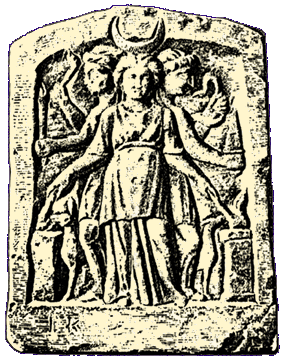
![]()
![]()
![]()
![]()
